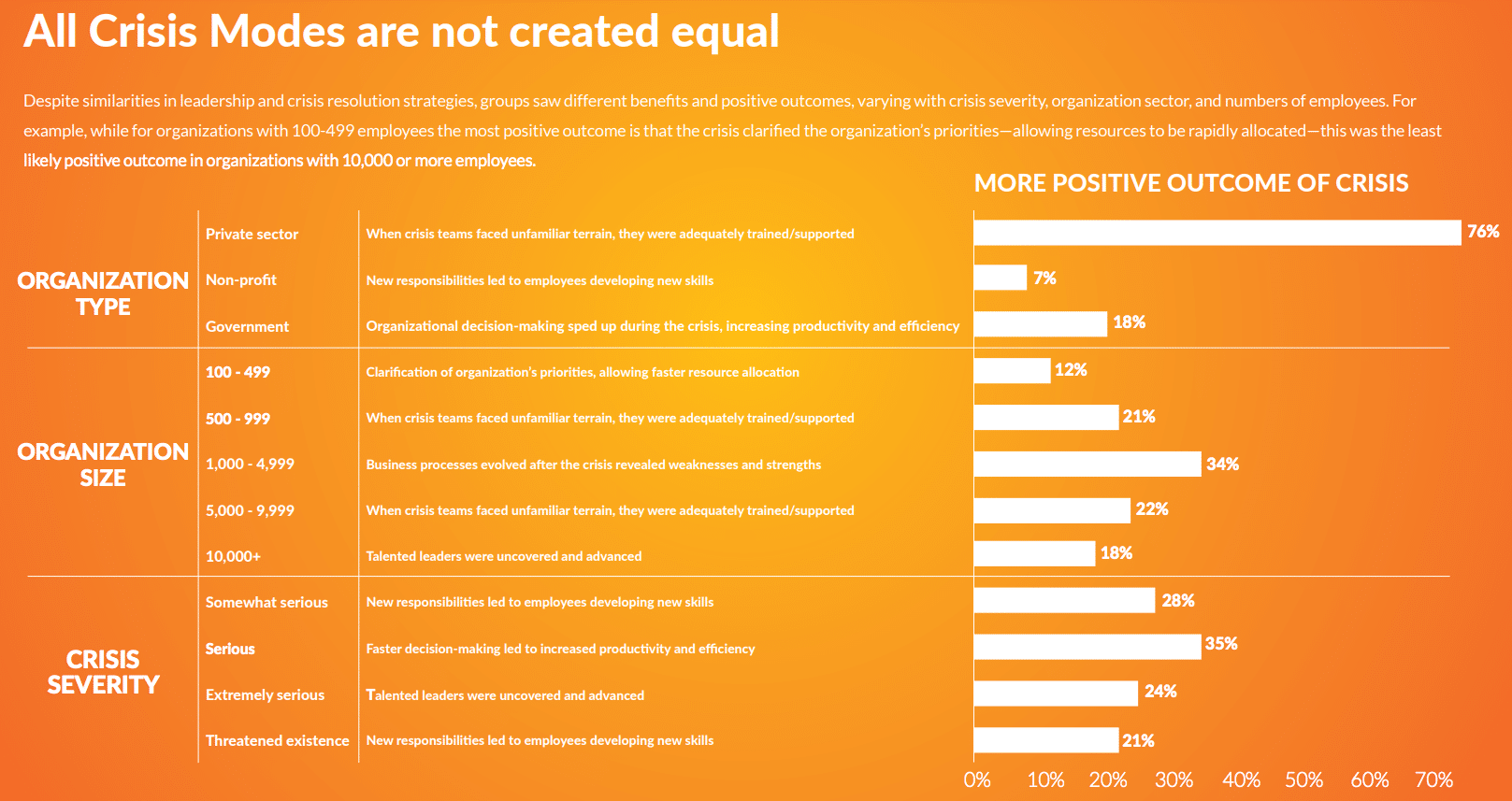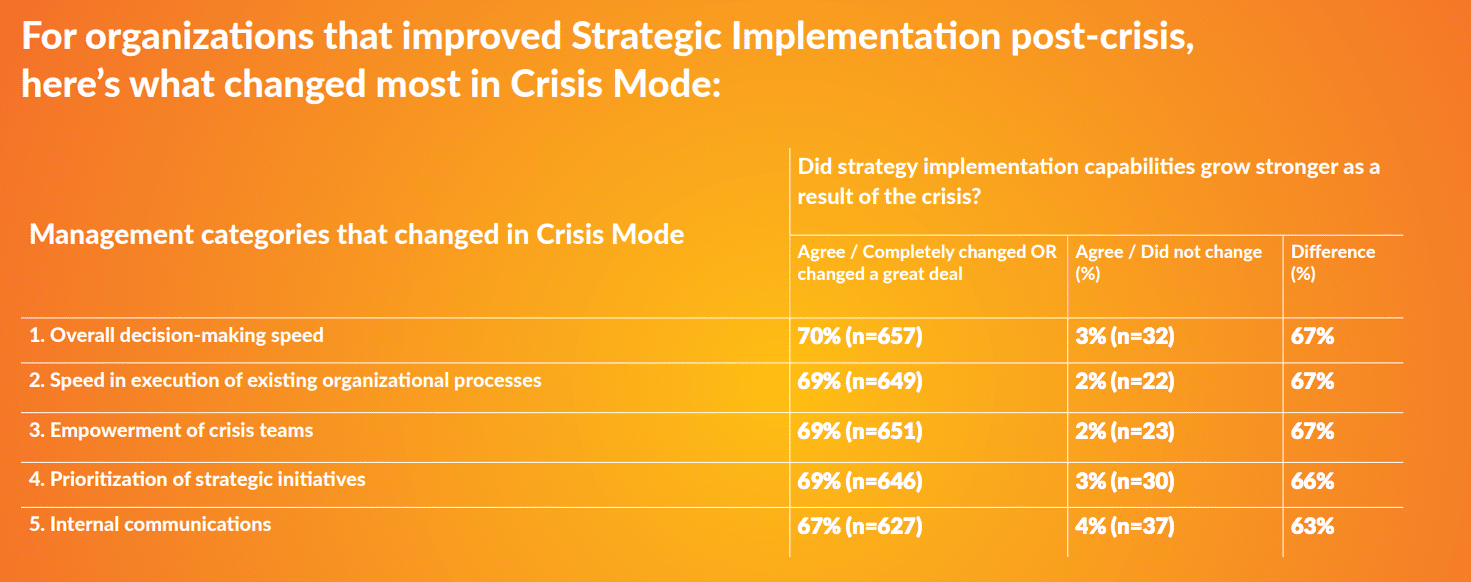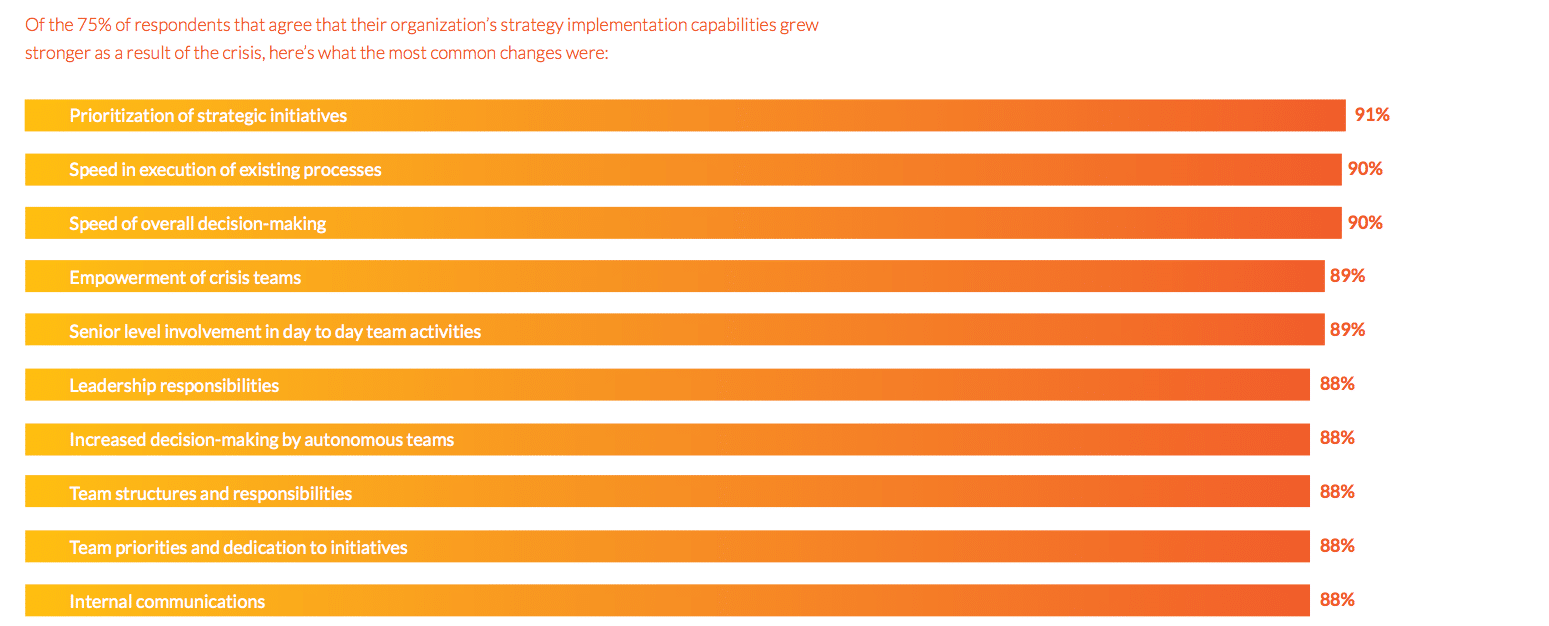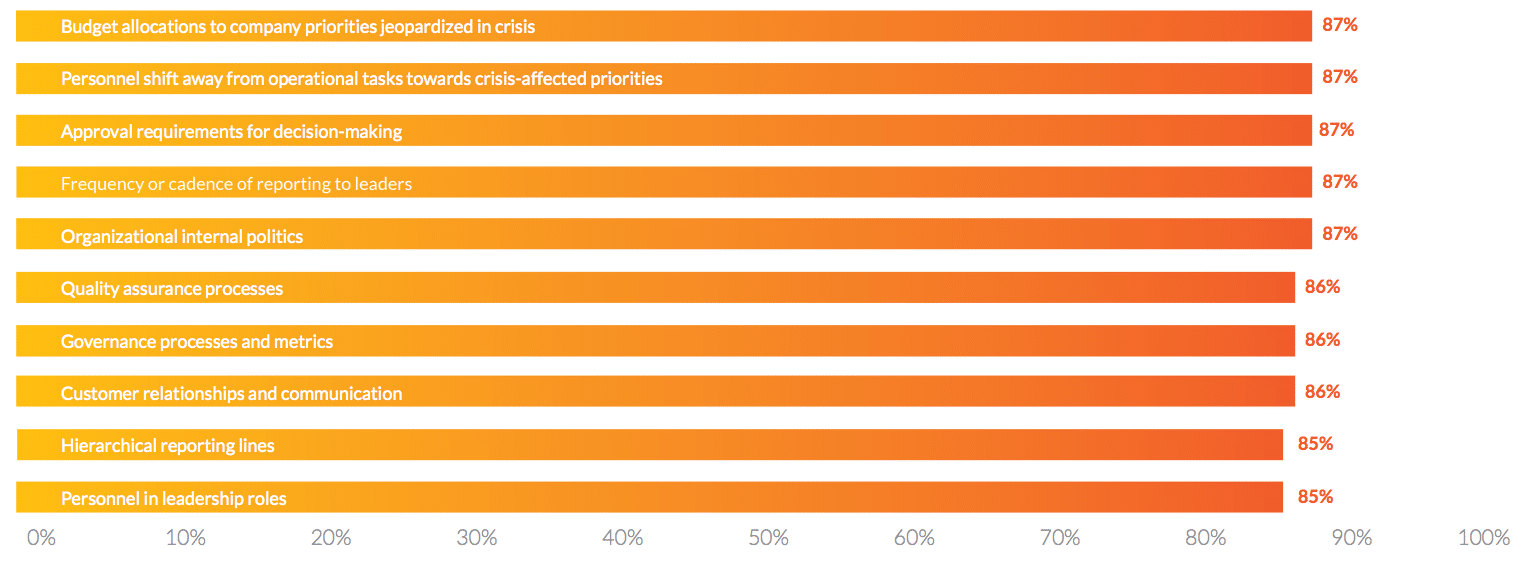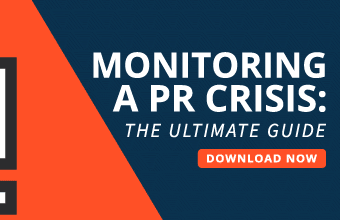As PR practitioners know all too well, a company crisis can have severe implications on brand reputation, but company strategy can also get sidelined during the chaos. New research from strategic coalition Brightline Initiative outlines key practices and recommendations to improve strategy implementation capabilities, as well as insights for how to leverage crisis experiences and enact change in non-crisis environments.
The report, Learning from Crisis Mode—Implications for Better Strategy Implementation, done in partnership with Quartz Insights, shows that a crisis can have a positive and lasting impact on three key areas of strategy implementation: prioritization of initiatives, speed in decision making and execution of process, and team empowerment.
“A crisis can bring out the best in your staff, unearth improvements in processes, and reveal new business opportunities, all of which can—and should—influence post-crisis strategy design and implementation,” said Ricardo Vargas, executive director at Brightline, in a news release.
Key findings include the following:
Expect a crisis
Sixty-eight percent of respondents agreed with the inevitability of their organizations facing a crisis in the future, and 91 percent of respondents agreed that when faced with a crisis, they changed the standard operating procedures. In the survey, we refer to this as “Crisis Mode.”
Identify lasting implementations
Seventy-nine percent of respondents agreed that modifications to team structures that were introduced as a result of the crisis remained in place, 74 percent agreed that close working partnerships between cross-functional teams continued, and 71 percent agreed that a clearer understanding of the organization’s priorities renewed its vision and sense of direction.
Prioritize strategic initiatives
Of the 75 percent of respondents who reported that experiencing Crisis Mode made them stronger in strategy implementation, 91 percent reported making changes to their prioritization of strategic initiatives. This re-prioritization implies a willingness to quickly assess what is and isn’t working without fear of abandoning a previously established direction.
Empower key employees
Organizations that empowered non-leadership-level employees who were closer to the crisis emerged stronger post-crisis than those that didn’t. Seventy-five percent of these high-performing organizations believe crises uncover talented leaders from within the organizational ranks, allowing those leaders to advance. This responsibility distribution allows for faster communication and fewer roadblocks.
Download the full report here.
The report is the result of 18 qualitative interviews and 1,258 quantitative interviews with executives from the government, non-profit and the private sector who have experienced a crisis. The majority of participants hold C-suite positions (52 percent) and coming from companies with annual global revenues of $1 billion or more (65 percent).



